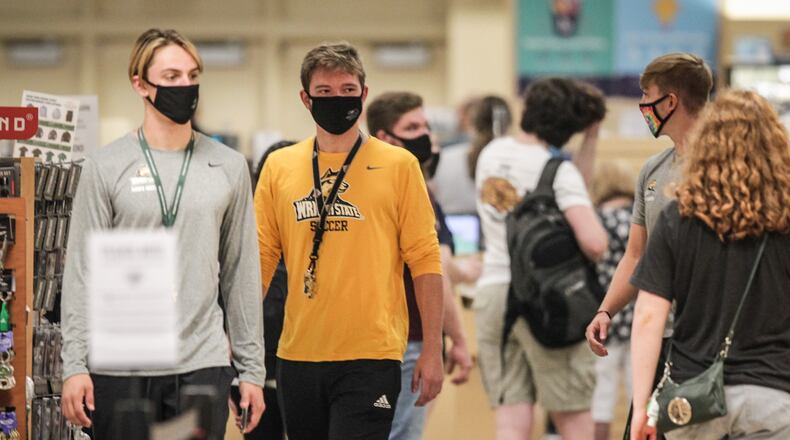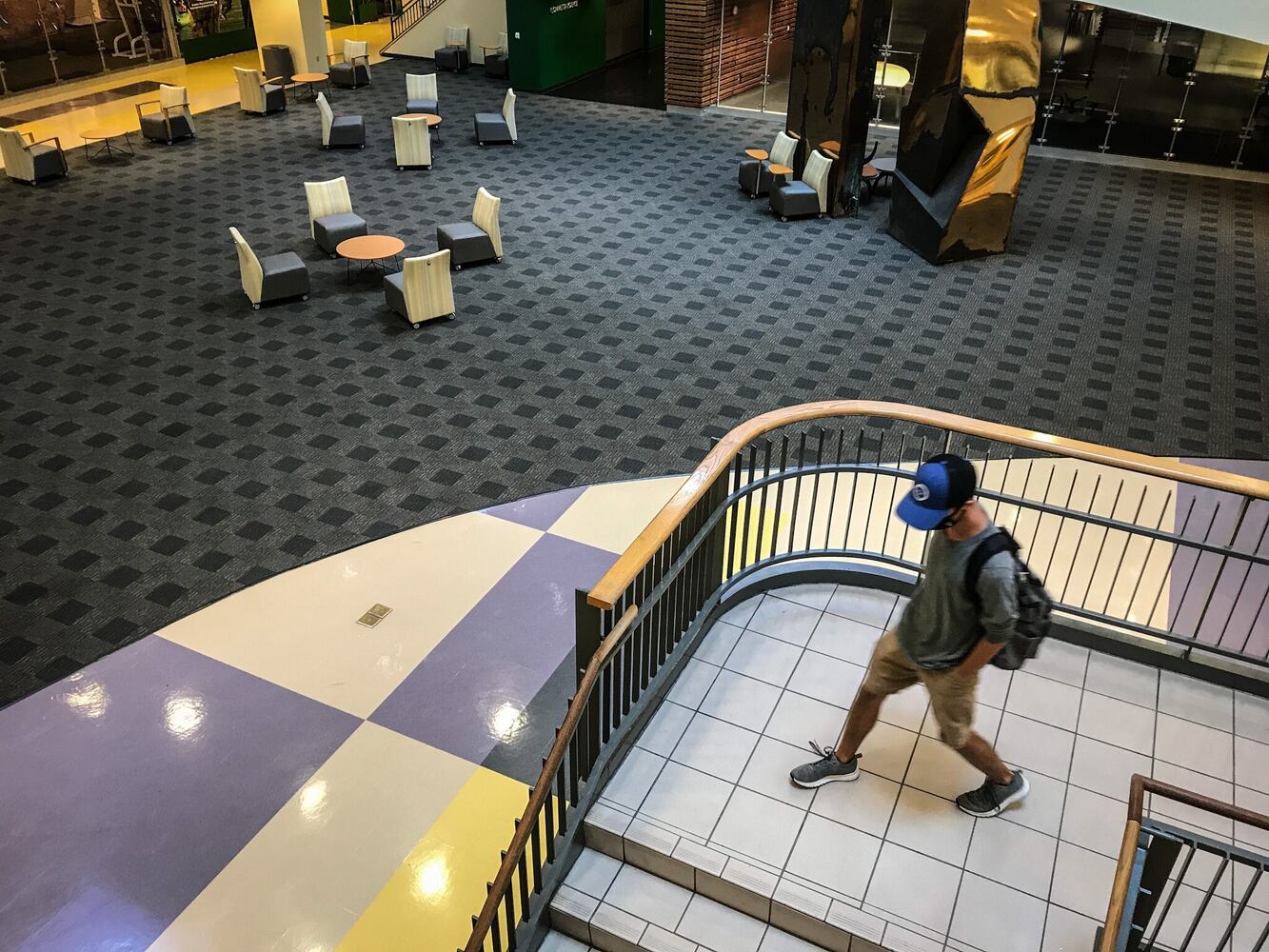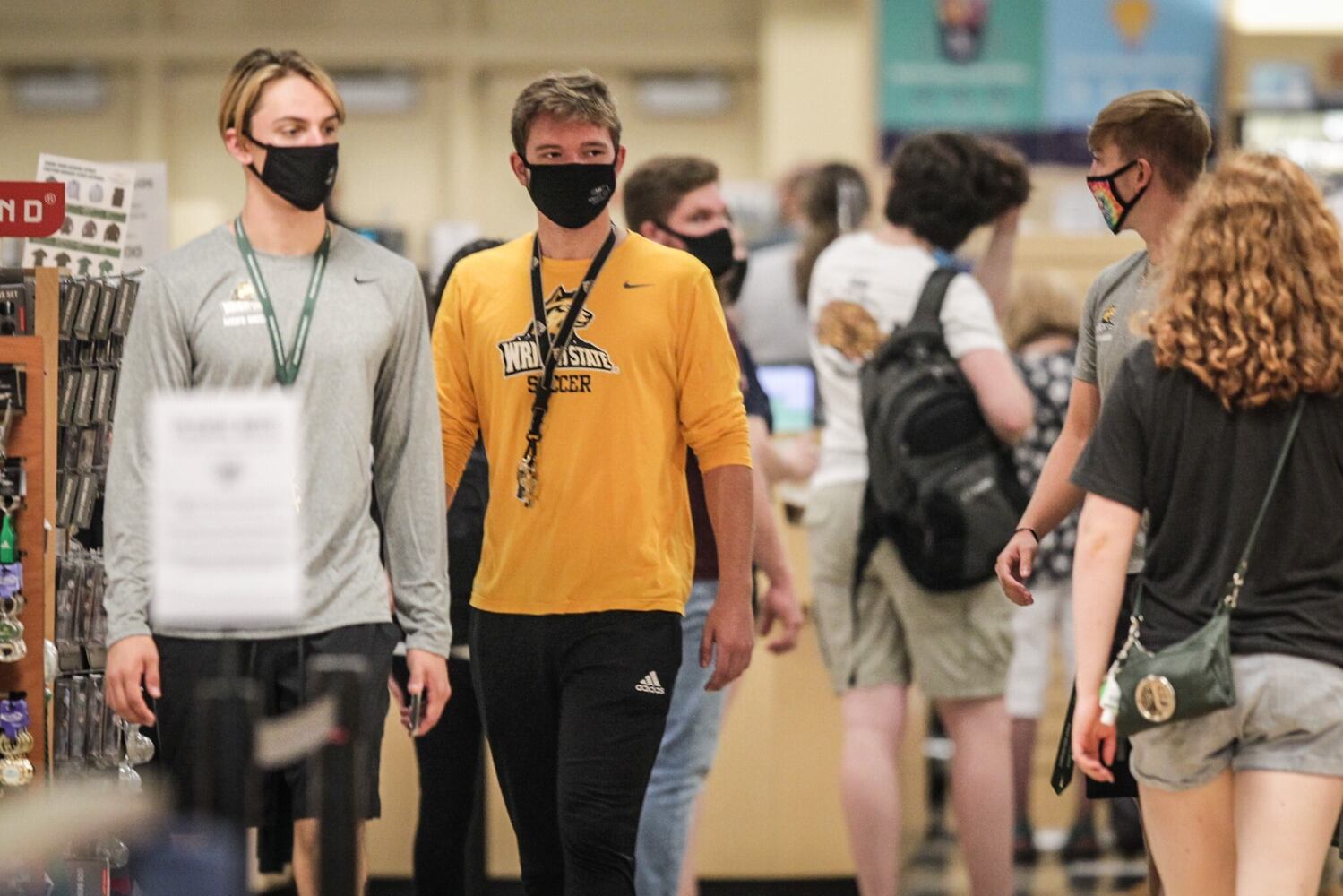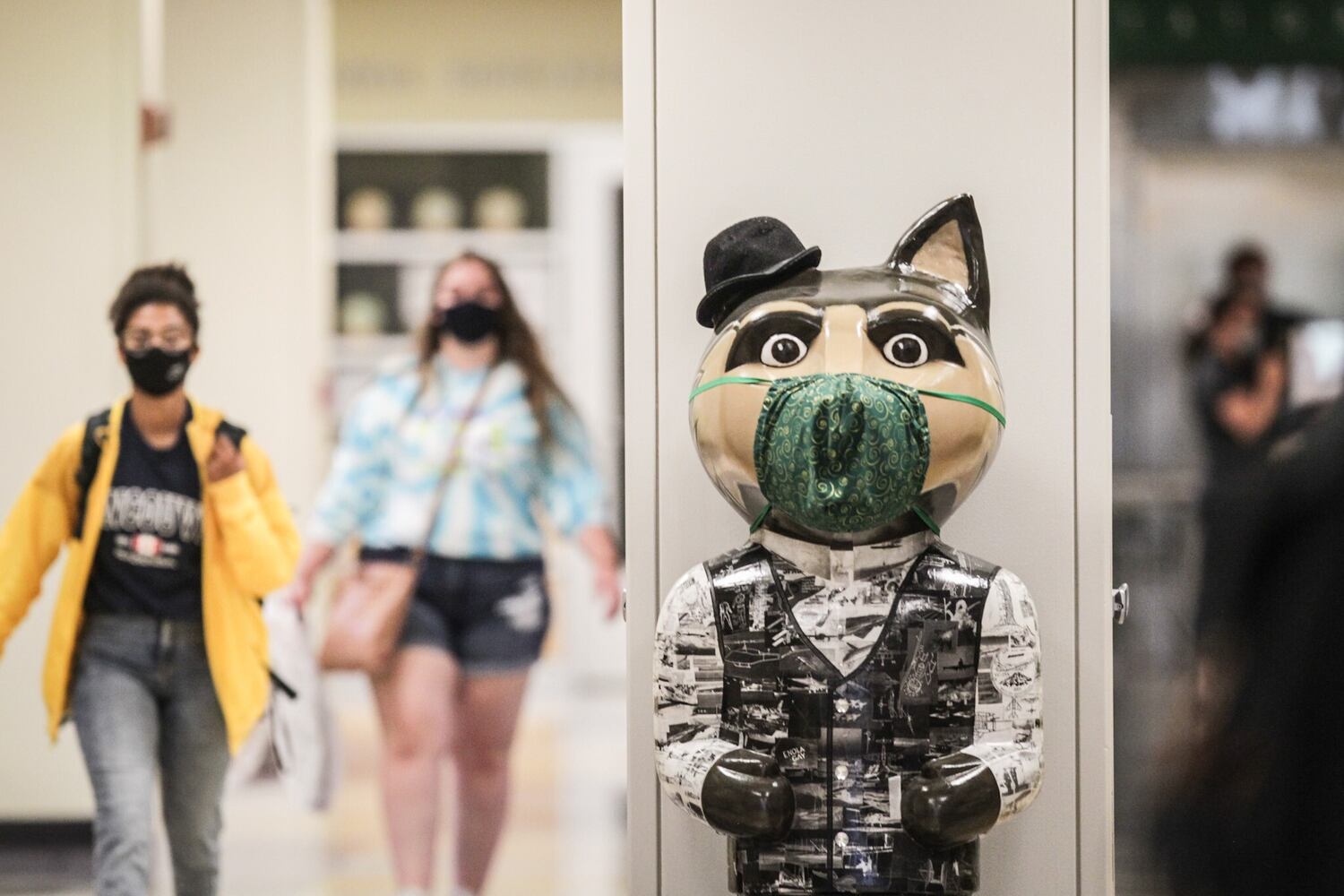Probably fewer than 30 percent of classes were expected to be physically held on campus, with about 70 percent being conducted online or remotely in some way.
The upshot: Far fewer students were expected to be physically on campus Monday, said Seth Bauguess, a Wright State spokesman.
In fact, all nonfamily students who live on campus have a dorm room all to themselves, Bauguess noted, with some of those suites built for two or three students.
>>PHOTOS: WSU classes resume during coronavirus pandemic
“It is not typical at all,” said Douglas Leaman, Wright State’s interim provost.
About 30 percent of WSU’s courses are either face to face or “flexible” — meant to be delivered in person on some days and online other days. And students always have the option of going fully online if they’re comfortable that way, Leaman said.
“As I look out my window, I can share that it’s a small percentage of students (physically on campus),” he added. “Campus is pretty quiet right now. The parking lots are pretty empty.”
And that is by design, he added.
Wright State is following Centers for Disease Control and Prevention guidelines for higher education. And the CDC’s recommendations at this time are not to perform “automatic testings” of all students returning to campus, Leaman said. Students may go to a campus or regional health center if they want a COVID test.
And at the moment, Wright State does not have a threshold or “trigger” that would move all classes wholly online, Leaman also said.
Credit: Jim Noelker
Credit: Jim Noelker
“We don’t have a number. We don’t have a threshold,” he said. Wright State leaders will eye the regional situation and will heed the advice of local and state health officials in the days and weeks ahead, he added.
“We would be able to pivot very quickly to fully remote” if need be, Leaman said.
Only 5 percent of classes overall require face-to-face work, he said, and those are mostly clinical.
When the pandemic first began to make itself truly felt in the United States in mid- to late-March, most universities quickly moved to online instruction only.
Sydney Hendricks, 21, is a Wright State junior who hasn’t been to campus yet but plans to visit soon.
Online classes have been somewhat tricky so far, she has found. As of Sunday night, class schedules had not been posted online, leaving her wondering when to log on for online study. Class schedules were listed online Monday morning, however, Hendricks said.
“We’re kind of playing it by ear,” she said.
“The problem for me as an individual is that I’m definitely not an online learner,” the elementary education major added. “It’s very hard for me. I’m a very hands-on and in-person learner, so that makes it 10 times harder to figure out what’s going on.”
Another challenge: At the moment, students can’t meet face-to-face with instructors.
A spokesman for Wright State cautioned that having classes online does not necessarily mean a static, asynchronous experience. “Asynchronous,” in this context, means that instruction is not delivered live, at the same time as a student watches and listens to that instruction.
“There will be some of that, but a lot of it will also be different kinds of dynamic, synchronous course delivery that is time-dependent like in a (physical) class,” Bauguess said.
Even before the pandemic, the population of traditional students had been declining for Wright State and other institutions.
There has been a 12% fall in enrollment from 2017 to 2019, administrators told Wright State trustees in June. About 10,700 students were expected in the fall semester of 2020, on a main Fairborn campus built for about 20,000 students.
As of Monday, however, Wright State has a projected fall enrollment of 11,960. An official count will be taken in two weeks.
At Sinclair Community College, there has been a 30% increase in online enrollment for the fall term, with 85% of Sinclair courses being offered online, while about 15% of classes to be delivered in traditional face-to-face settings, “with significant safety measures in place,” the college said.
Adam Murka, Sinclair vice president of advancement, said school is going well. But then, it never really stopped.
“One thing to remember about us is, we offered summer classes,” he said Monday. “It’s not that we opened up. We never stopped offering classes.”
“None of this is what any of us would ever choose, but I think we’ve done a good job adapting to it,” he added.
He was unable to offer precise fall term enrollment figures, but said online enrollment has clearly “skyrocketed.” Exact numbers will likely be available later in the semester, he added.
“Sinclair Community College is committed to providing a safe and welcoming learning environment for our entire student body and to providing access to high quality education for our entire community,” Sinclair President Steve Johnson said in a statement Monday.
The University of Dayton announced a shift to remote learning after an abrupt increase in the number of confirmed cases — including 33 on Saturday — preceding the start of school Monday. As of Sunday, UD reported 68 cases currently active of a total 82 positive cases since June 23.
At Central State University, classes will begin Sept. 8, spokeswoman Sabrina Pritchett said.
Miami University
Nearly 20,000 undergraduate and graduate Miami University students opened their fall semester last week in their homes as the Butler County school delayed the start of in-person learning to Sept. 21.
By the end of the first week of remote-learning classes, 10 Miami students living off campus in Oxford — and two school employees — had tested positive for the coronavirus, university officials said.
School officials said it remains to be seen if Miami will conduct in-person learning at its main Oxford campus and its regional schools in Hamilton and Middletown.
“The health and safety of our students, faculty, staff and communities are our paramount concern,” Miami University President Gregory Crawford said in a statement. “The coming days and weeks will provide us with much more information to determine if we can still proceed with our planned residence hall move in beginning on Sept. 14, and the resumption of in-person courses.”
University of Cincinnati
More than 46,400 students began classes at Southwest Ohio’s largest university Monday but with most starting with remote learning, rather than in-person classes.
More than 5,000 students moved into on-campus housing at the University of Cincinnati’s main campus just north of downtown Cincinnati, said school officials.
Of UC’s total enrollment, about 75 percent are learning via online classes with 25 percent attending classes in-person.
Xavier University
The more than 6,800 students at Cincinnati’s Xavier University returned to in-person classes last week with a schedule composed of a mix of traditional classroom instruction and online learning.
Among the changes on campus are about 1,600 individual study spaces recently added around campus, said Xavier officials.
In a statement released when classes began Aug. 17, Xavier said “most courses will be taught in a hybrid mode where some students will be in-person and some remote.”
Schools officials said for first-year undergraduate students, 46 percent will have zero to one online course, while 73 percent of new students will have two or fewer online courses.
About the Author







